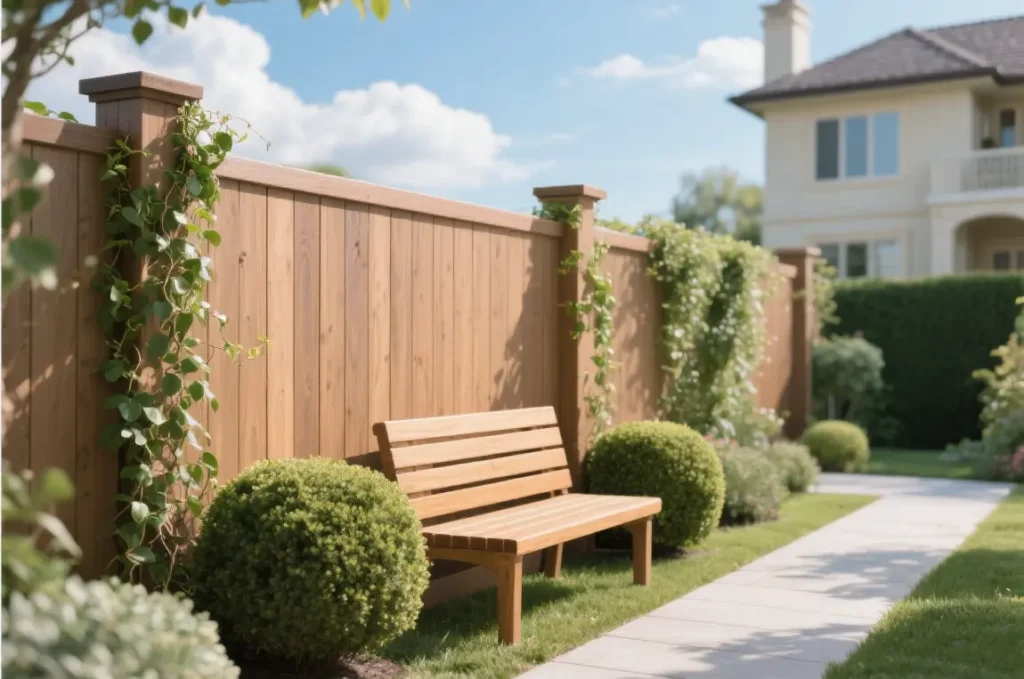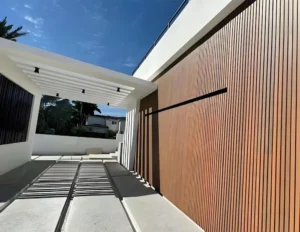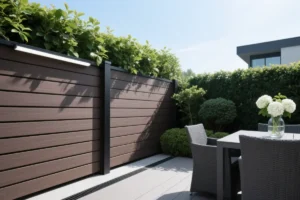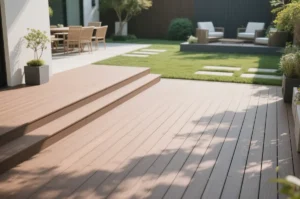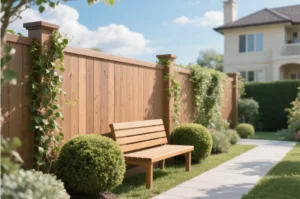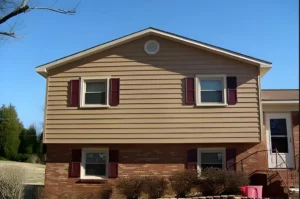Composite fencing has become one of the most popular choices for homeowners and businesses looking for a balance of durability, style, and sustainability. Unlike traditional wood, composite fence panels require less maintenance and can last for decades. If you are planning to install a composite fence around your property, this guide will walk you through every step of the process.
Whether you are a DIY enthusiast or working with a professional contractor, understanding the correct installation method ensures a strong, secure, and long-lasting fence.
Why Choose Composite Fencing?
Before diving into the installation, it’s important to understand why composite fencing is a smart investment. For a full overview of materials and benefits, see our Ultimate Guide to Composite Fencing.
- Durability: Made from a blend of wood fibers and recycled plastic, composite fence boards are resistant to rotting, warping, and insect damage.
- Low Maintenance: Unlike wood fences that require painting or sealing, composite only needs occasional cleaning with soap and water.
- Aesthetic Appeal: Available in a variety of colors and textures, composite panels mimic natural wood while offering modern design options.
- Eco-Friendly: Most manufacturers use recycled materials, making composite fencing an environmentally responsible choice.
Planning Your Composite Fence Installation
Good preparation is key to a successful project. Before you start digging holes, take time to plan your fence carefully.
- Check Local Regulations
Every region has building codes and zoning rules. Make sure you confirm the maximum fence height, required permits, and property line limits before installation. - Measure Your Space
Accurate measurements help you order the right amount of composite fence panels, posts, and hardware. Sketch your layout and mark where each post will go. - Gather Tools and Materials
Common tools include: post hole digger, level, drill, measuring tape, concrete mix, and protective gloves. Your fence kit should include composite panels, posts, post caps, and brackets. - Plan for Utilities
Always call your local utility company to check for underground cables or pipes before digging.
Step 1: Mark and Prepare the Fence Line
Start by marking the exact line where your fence will be installed. Use stakes and string to create a straight guide. This ensures your fence panels align properly and look professional once installed.
- Space your posts according to the panel size (usually between 6–8 feet apart).
- Double-check corners and entry points for gates.
Step 2: Dig Post Holes
Fence posts are the backbone of your structure, so this step requires precision.
- Dig holes that are at least one-third the length of the post. For a 6-foot fence, posts should extend about 2 feet underground.
- The standard hole diameter is about 10–12 inches.
- If you live in a cold climate, dig below the frost line to prevent shifting during winter.
Step 3: Set the Posts in Concrete
To ensure stability, posts must be secured properly.
- Place each post into the hole and use a level to check for vertical alignment.
- Pour in concrete mix and allow it to set for at least 24–48 hours.
- Keep the posts supported with braces until the concrete fully cures.
Solid posts guarantee that your composite fence panels remain aligned and durable over time.
Step 4: Attach the Fence Panels
Once your posts are secure, it’s time to install the panels.
- Use brackets or rail systems provided by the manufacturer.
- Slide or screw the composite boards into place, ensuring they fit tightly.
- Check alignment frequently with a level to maintain a straight finish.
Composite panels are heavier than wood, so having a second person help will make the process smoother and safer.
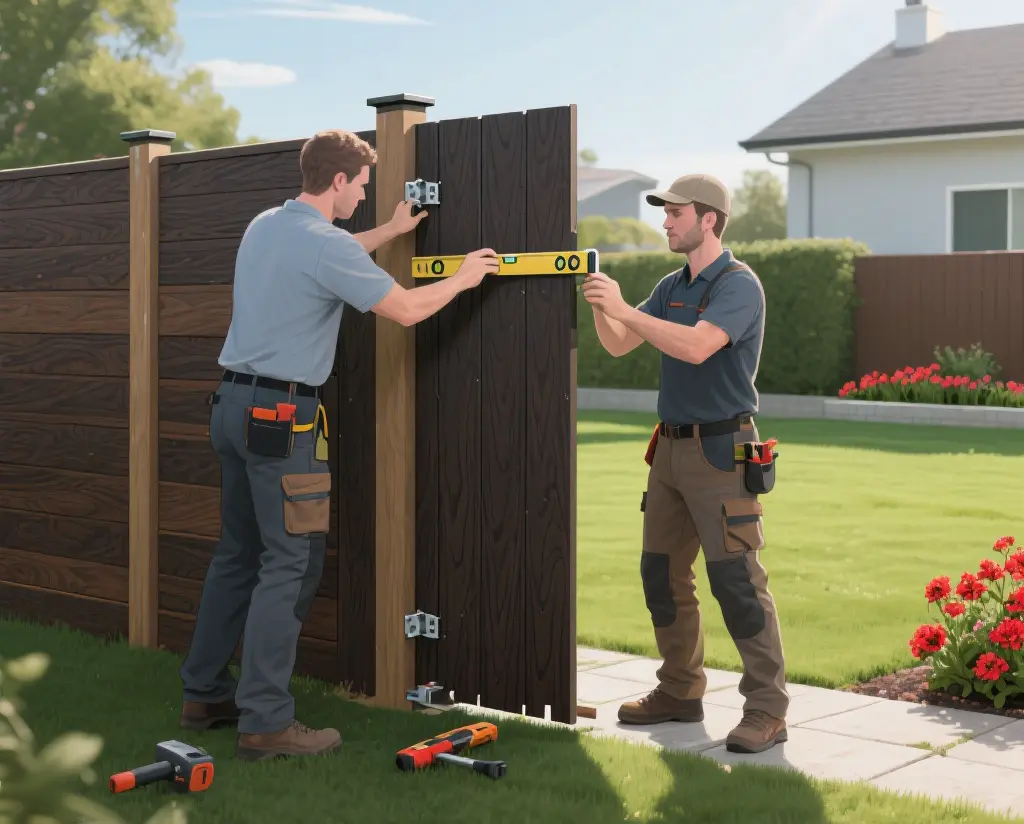
Step 5: Install the Gates
If your fencing project includes a gate, pay special attention to this step.
- Use heavy-duty hinges and secure them to reinforced posts.
- Ensure the gate opens smoothly without dragging.
- Add latches or locks for security.
A properly installed gate increases both accessibility and safety.
Step 6: Add Finishing Touches
The final details enhance both appearance and longevity.
- Install post caps to protect posts from water infiltration.
- Clean up concrete residue and construction debris.
- Rinse the fence with water to remove dust and dirt from the installation process.
Maintenance Tips After Installation
Although composite fencing is low-maintenance, following a few simple practices will keep it looking new for years.
- Regular Cleaning: Wash the surface with mild soap and water every few months.
- Avoid Harsh Chemicals: Do not use bleach or strong solvents, as they may damage the material.
- Check Hardware: Inspect brackets, hinges, and screws annually to ensure they remain tight.
- Prevent Overgrowth: Trim plants and shrubs near the fence to avoid unnecessary pressure or staining.
For decking owners, these practices are similar to extending the lifespan of WPC decking.
Common Installation Mistakes to Avoid
Even with quality materials, mistakes during installation can shorten the life of your fence. Avoid these errors:
- Shallow Post Holes: Insufficient depth can cause leaning or collapse.
- Skipping Concrete: Gravel or soil alone will not hold posts securely.
- Ignoring Slope Adjustments: On sloped ground, use stepped or racked panels for a professional look.
- Wrong Spacing: Misaligned posts will create gaps and structural weaknesses.
By avoiding these pitfalls, you ensure your composite fence remains strong and attractive for decades.
DIY vs Professional Installation
Some homeowners prefer DIY installation, while others hire professionals. Which option is right for you?
- DIY: Cost-effective, rewarding, and manageable with basic tools. Best for small to medium projects.
- Professional Installation: Recommended for large yards, sloped terrain, or when time is limited. Professionals bring experience, specialized equipment, and warranty guarantees.
If you are new to fencing, consider hiring a contractor for at least the post-installation stage, since that’s the most critical for structural stability.
Conclusion
Installing composite fencing is a valuable investment that enhances your property’s privacy, security, and curb appeal. With careful planning, the right tools, and attention to detail, you can build a fence that lasts for decades with minimal maintenance.
Whether you choose to handle the installation yourself or hire a professional, composite fencing offers long-term durability, eco-friendly benefits, and modern design flexibility.
By following this step-by-step installation guide, you’ll ensure your fence not only looks great but also provides reliable performance for years to come.

